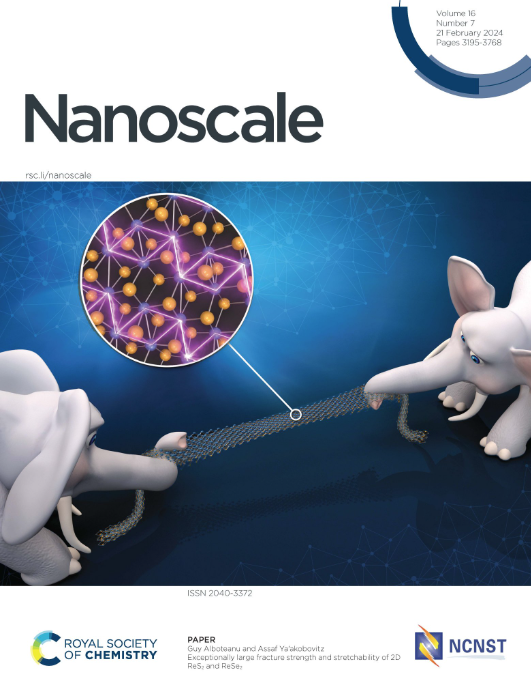Pairing Ru-doped NiCo-layered double hydroxides and selenide derivatives as self-supporting electrocatalyst for alkaline overall water splitting
IF 5.8
3区 材料科学
Q1 CHEMISTRY, MULTIDISCIPLINARY
引用次数: 0
Abstract
The pursuit of a catalyst exhibiting exceptional efficacy and an optimal cost-performance ratio currently composes a prominent research focus. Herein, Ru-NiCo LDH/NF-4 (4 represents 4 mg mL-1 RuCl3⋅xH2O soultion) is prepared by impregnating NiCo layered double hydroxides (NiCo LDH) grown on nickel foam (NF) with RuCl3⋅xH2O soultion. The Ru-NiSe2/CoSe/NF-4 is prepared by selenization of Ru-NiCo LDH/NF-4. Benefiting from the three-dimensional flower-like nanosheet arrays, the synergistic effect between Ru and non-precious metal materials and the change of Ru electron valence state, Ru-NiCo LDH/NF-4 and Ru-NiSe2/CoSe/NF-4 exhibit low HER and OER with achieving overpotentials of 45 mV and 238 mV, respectively, with a current density of 10 mA cm-2 in 1.0 M KOH. Furthermore, when utilizing Ru-NiCo LDH/NF-4 as the cathode electrode and Ru-NiSe2/CoSe/NF-4 as the anode electrode, a voltage of 1.53 V is required to achieve overall water splitting at a current density of 10 mA cm-2, gaining exceptional stability for over 300 hours in 1.0 M KOH. This work presents a novel approach for integrating precious metals and non-precious metal material to reduce costs and optimize performance, offering a fresh perspective on the novel combination for water electrolysis.钌掺杂nico层状双氢氧化物和硒化物衍生物配对作为碱性整体水分解的自持电催化剂
追求一种具有卓越功效和最佳性价比的催化剂是目前研究的重点。用RuCl3⋅xH2O溶液浸渍泡沫镍(NF)表面生长的NiCo层状双氢氧化物(NiCo LDH),制备Ru-NiCo LDH/NF-4(4代表4 mg mL-1 RuCl3⋅xH2O溶液)。采用Ru-NiCo LDH/NF-4硒化法制备ru - nis2 /CoSe/NF-4。得益于三维花状纳米片阵列,Ru- nico LDH/NF-4和Ru- nis2 /CoSe/NF-4具有较低的HER和OER,在1.0 M KOH下电流密度为10 mA cm-2,过电位分别为45 mV和238 mV。此外,当使用Ru-NiCo LDH/NF-4作为阴极电极,ru - nis2 /CoSe/NF-4作为阳极电极时,需要1.53 V的电压才能在10 mA cm-2的电流密度下实现整体水分解,并在1.0 M KOH下获得超过300小时的优异稳定性。本研究提出了一种整合贵金属和非贵金属材料以降低成本和优化性能的新方法,为水电解的新组合提供了新的视角。
本文章由计算机程序翻译,如有差异,请以英文原文为准。
求助全文
约1分钟内获得全文
求助全文
来源期刊

Nanoscale
CHEMISTRY, MULTIDISCIPLINARY-NANOSCIENCE & NANOTECHNOLOGY
CiteScore
12.10
自引率
3.00%
发文量
1628
审稿时长
1.6 months
期刊介绍:
Nanoscale is a high-impact international journal, publishing high-quality research across nanoscience and nanotechnology. Nanoscale publishes a full mix of research articles on experimental and theoretical work, including reviews, communications, and full papers.Highly interdisciplinary, this journal appeals to scientists, researchers and professionals interested in nanoscience and nanotechnology, quantum materials and quantum technology, including the areas of physics, chemistry, biology, medicine, materials, energy/environment, information technology, detection science, healthcare and drug discovery, and electronics.
 求助内容:
求助内容: 应助结果提醒方式:
应助结果提醒方式:


